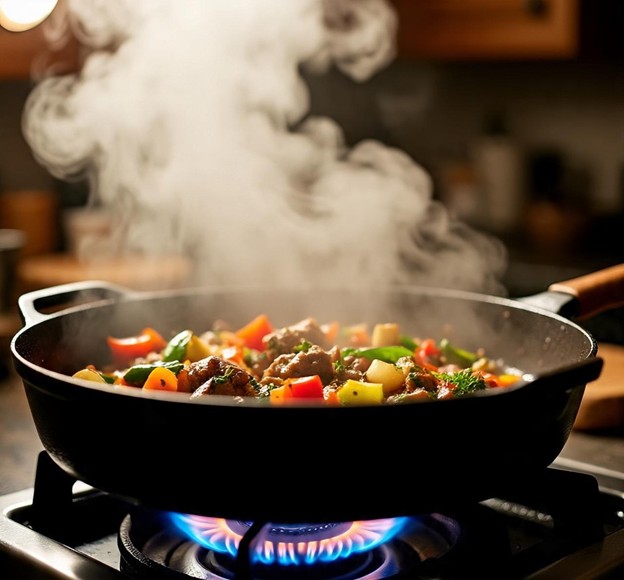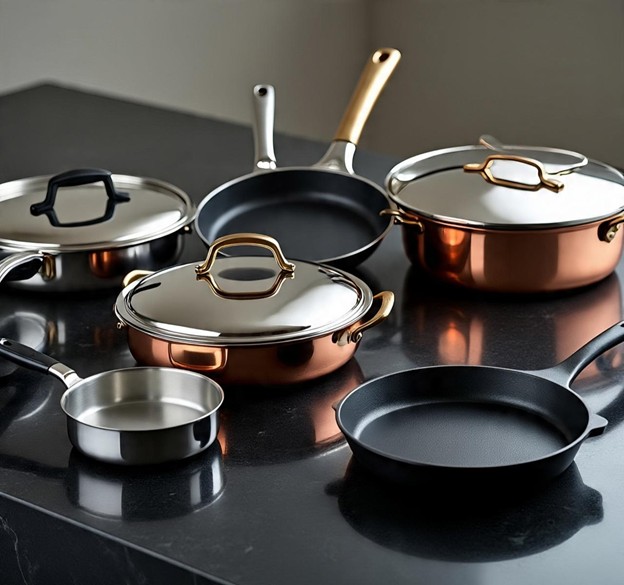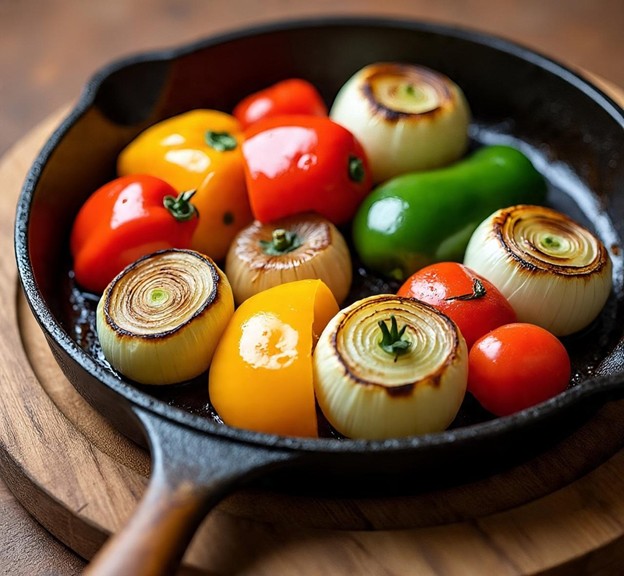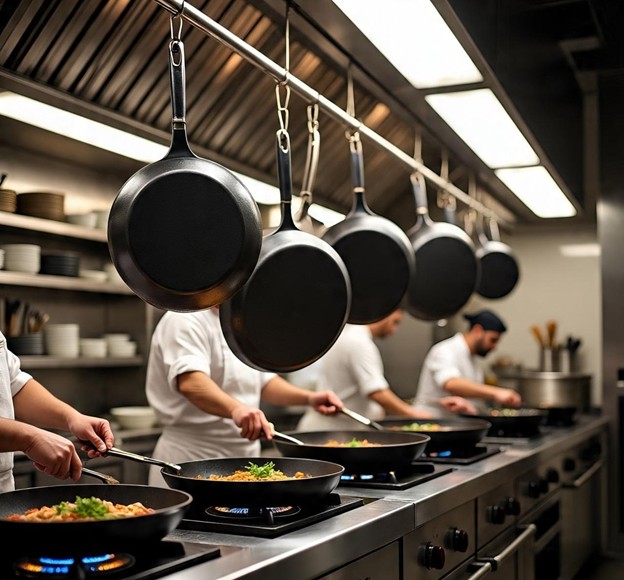The smoke alarm blaring at 3:47 AM definitely wasn’t on my agenda. And neither was the surprise that my great-aunt’s “rusty old pan” could turn frozen veggies into a dish that tasted like it was whipped up in a five-star kitchen. But hey, sometimes the universe has a quirky way of teaching us those life-altering lessons.

What began as a frantic effort to save dinner from some iffy leftovers morphed into a passion that completely changed my perspective on cooking. It turns out that “useless” cast iron pan tucked away in my cabinet was hiding some secrets that the cookware industry really doesn’t want you to know about.
The $15 Pan That Humbled a $400 Kitchen
My kitchen was like a shrine to the latest in cooking technology. I had non-stick surfaces with fancy nano-ceramic coatings, tri-ply stainless steel pots with aluminum cores, and even copper-bottomed beauties that cost more than my entire grocery budget for the month. I truly believed I had unlocked the secret to perfect cookware.

Then, one fateful midnight, everything went haywire—and yet, somehow, it all turned out just right. My beloved non-stick pan was in the dishwasher, and my stainless steel pots were all dirty. The only thing left was that old cast iron skillet I had inherited and completely forgotten about. What happened next shattered everything I thought I knew about cooking!
The Heat Physics That Cookware Companies Don’t Advertise
Let’s talk about something that often gets overlooked when it comes to heat distribution: most of today’s cookware is built for speed rather than even heating. It’s like comparing a sprinter to a marathon runner in the culinary world.
Food science experts and test kitchens often rave about how cast iron outshines thinner metals when it comes to heat retention. Thanks to its dense and thick structure, cast iron serves as a fantastic heat reservoir — so when you toss in cold ingredients, the temperature doesn’t drop as sharply. Serious Eats dives into how cast iron boasts a high volumetric heat capacity, allowing it to hold heat much better than thin aluminum or stainless steel. But here’s the real kicker—it’s not just about retaining heat; it’s about what physicists refer to as “thermal inertia.”
When you toss cold food into a hot cast iron pan, the temperature barely flinches. Your pan keeps its searing heat while everything else adapts around it. It’s like having a thermal anchor in your kitchen—steady, dependable, and completely unwavering.
On the flip side, that pricey non-stick pan? The second you introduce cold ingredients, its temperature drops faster than your enthusiasm on a Monday morning.
The Maillard Reaction’s Secret Love Affair
The midnight epiphany hit me as I watched my frozen Brussels sprouts—yes, those frozen ones—transform into a beautifully caramelized crust that would make any restaurant chef green with envy. In that moment, I realized I was witnessing something extraordinary: the Maillard reaction in all its glory.

Now, let’s talk science: the Maillard reaction is that enchanting process that brings out rich flavors and stunning browning, but it needs the right conditions to thrive. We’re talking about temperatures above 280°F, minimal moisture, and steady heat. And guess what? Cast iron nails all three at once.
Here’s the scoop: while other pans struggle to keep their cool when you toss in food, cast iron’s hefty thermal mass keeps the heat steady, hitting those ideal Maillard temperatures like a champ. It’s like having your very own flavor lab right on the stove!
Food scientists often point out that achieving a consistent high heat, low moisture, and stable surface temperature is essential for achieving that delicious Maillard browning. Cast iron skillets are particularly good at holding onto those searing temperatures, which means they can create more of those tasty browned compounds compared to pans that cool down too quickly. These compounds aren’t just about looking good—they’re flavor dynamos that create the rich, complex tastes we often associate with top-notch cooking.
The Seasoning Mythology Decoded
Let’s tackle the big topic here: taking care of cast iron. The internet is overflowing with seasoning rituals that sound more like magic spells than actual cooking advice. Flaxseed oil applied in super thin layers? Oven temperatures that need to be as precise as a NASA launch? And don’t even get me started on the hours of waiting between each coat!
Here’s the liberating truth: cast iron seasoning is simply polymerized fat. That’s all there is to it! You’re basically crafting a natural non-stick layer through a bit of controlled oxidation.
The process is forgiving, easy to grasp, and surprisingly tough. Take my great-aunt’s pan—the one that kicked off this whole adventure—it hadn’t been “properly” seasoned in decades. Yet, it outperformed cookware that cost twenty times as much!
The real secret isn’t about nailing the perfect technique; it’s realizing that every time you cook with fat in cast iron, you’re naturally enhancing the seasoning. Bacon grease, olive oil, butter—they’re all part of your pan’s journey to greatness.
Why Your Grandmother’s Cast Iron Outperforms Modern Science
There’s something incredibly rewarding about cooking with cookware that your grandmother perfected long before you came along. But it’s not just about the nostalgia—it’s also about appreciating the gradual improvements that come with time.
Unlike modern cookware that tends to wear out, cast iron actually improves. Each meal you prepare leaves tiny enhancements, and every seasoning session adds another protective layer. Each cook in the family plays a part in the pan’s journey.
Cast iron is known for its incredible durability—when taken care of, many pieces can last for generations. The Lodge company and collectors often highlight heirloom pans that are still in use after a century or even longer. While there might not be extensive scientific studies on this, many seasoned cooks agree that the longevity of cast iron is one of its standout features.
Just think about it: your great-great-great-grandkids could be using the same pan you’re seasoning right now. Meanwhile, that pricey non-stick cookware? It’ll probably end up in a landfill in just five years.
The Restaurant Secret They Don’t Want Home Cooks to Know
In a lot of professional kitchens, cast iron remains an essential tool — particularly for tasks that need reliable, high-heat performance, like searing or caramelizing. Seasoned chefs often depend on the consistent results that cast iron provides, even if other types of pans tend to steal the spotlight in advertisements.

Chef Thomas Keller shared in a rare interview that Michelin-starred restaurants turn to cast iron for tasks that demand precise temperature control. Whether it’s searing steaks, caramelizing veggies, or whipping up perfect hash browns, the success of these dishes hinges on consistent heat.
The reason is straightforward: in the fast-paced world of professional kitchens, there’s no space for tools that can’t handle the heat. Cast iron always comes through, no matter how chaotic things get or how quickly ingredients need to be tossed in.
At KitchenSupports, we’ve seen this trend among home cooks who stumble upon the reliability of cast iron. Once they experience those consistent results, they can’t help but wonder why they ever used anything else.
The Midnight Transformation Protocol
That late-night cooking adventure at 3 AM taught me a valuable lesson: cast iron loves confidence over perfection. Here’s the game-changing approach that transformed how I interact with this timeless cookware:
Start With High Heat, Stay With High Heat
Don’t coddle your cast iron. Give it a good preheat, then keep those temperatures up. This isn’t about being gentle—it’s about forming a solid partnership with heat.
Embrace the Sizzle
When your food hits that well-heated cast iron, it should make a statement. That sizzle isn’t just for show; it’s the sound of those delicious Maillard reactions kicking in.
Trust the Process
Cooking with cast iron takes a bit of patience when it comes to heating, but the payoff is worth it. Allow the pan to reach the right temperature, then trust its ability to deliver consistent results.

Beyond Cooking: The Psychology of Permanent Tools
One of the most enchanting things about cast iron is how it transforms and matures over time. With regular use and a bit of TLC, the seasoning layers become richer, the surface can feel smoother, and a beautiful patina emerges. However, it’s important to remember that it still needs some care and the occasional touch-up to keep it in great shape.
Your kitchen deserves cookware that improves with every meal you whip up. Are you ready to uncover the wisdom your great-aunt had about the magic of well-heated iron?


